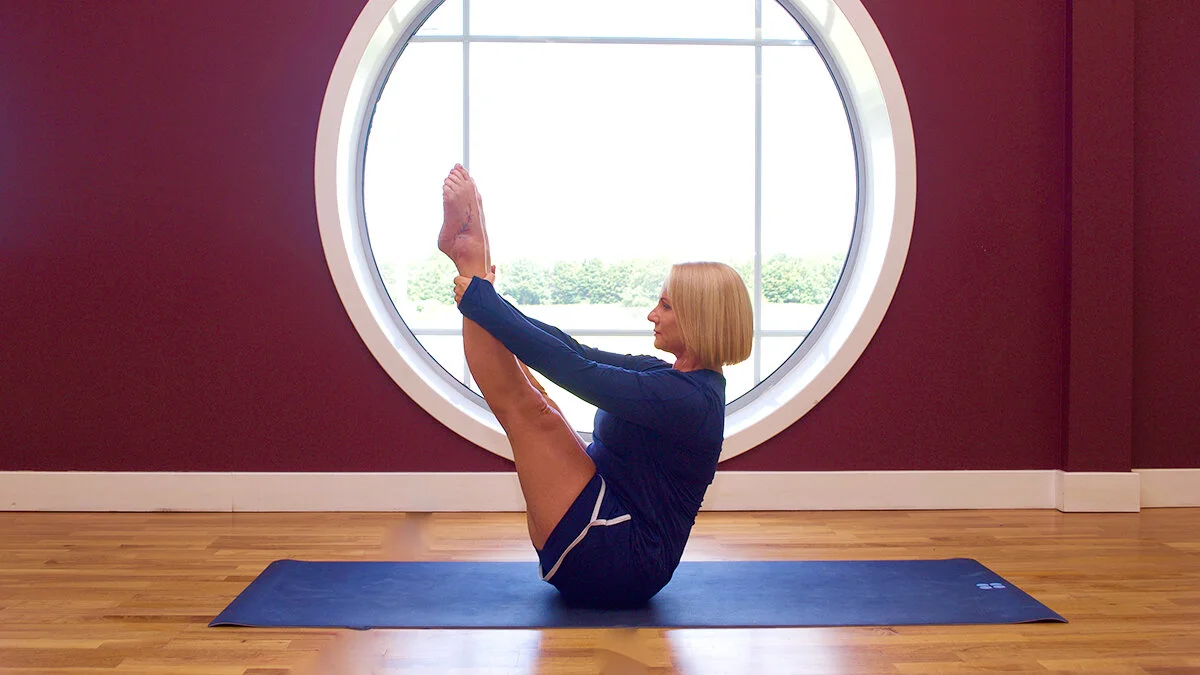The importance of keeping your body in balance
Your body is very clever: most of the time, it's in fight or flight mode in the sympathetic nervous system (this system’s activity increases when you're stressed, in danger or physically active). Your parasympathetic nervous system, on the other hand, inhibits your body from overworking and restores it to a calm and composed state. It's therefore very important to achieve a balance of both through Pilates and through cardio classes where you're raising the heart rate. That’s why I love teaching on Zoom because I can offer you both at your fingertips!
We slow down as we age: imagine you’re out and see a car zooming towards you ,so need to get out the way really quickly … it's your sympathetic nervous system that stops you getting run over and hit because you’re able to react quickly.
How Pilates helps
However, many of us spend too much time in our sympathetic nervous system and not enough time down-regulating ourselves in what’s termed ‘rest and digest’ – in other words, slowing down into the parasympathetic nervous system. The only time you might do this is when you’re asleep. That’s not good for you because your subconscious forgets how to down-regulate, which can result in a build-up of stress hormones, anxiety, and even manic depression.
It's the same once you retire and slow down: your sympathetic nervous system that stops you from getting into danger also slows down – it’s another reason why people fall over when they're older; their reactions are unsteady. But doing Pilates, being aware of your core and working on your balance and bone density will help you prevent osteoporosis or osteopenia.
How cardio helps
Doing cardio in addition to Pilates is very important.
My classes include simple ways to raise the heart rate, without jumping, by just padding on the balls of your feet – it’s a great way to increase bone density in your ankles, knees, hips and lower back. And if doing so is hurting you, maybe it’s because your muscles in your bones aren't strong enough to sustain you. We tend to associate discomfort and pain with damaging your body – but if you can't sustain 60 seconds of padding on the balls of your feet, your body is already damaged.
It’s much healthier to go for a shorter, more dynamically-paced walk and be out of breath for 60 seconds, for a cardiovascular reaction, then either slow things down or do some Pilates and stretching back at home, than it is to go out for three or four hours at a consistent low-level walking pace which causes repetitive strain on your hip joints.
Why you shouldn’t keep using the same level of weights
As you spend a lot of the time in your parasympathetic nervous system, when you start using weights that you’ve kept the same for the last few years, your body thinks that’s the level you need to be at to ‘survive’. What can then happen is that you slip back rather than move forward. Sometimes you have to move forward to sustain where you are by lifting heavier weights.
So, if you're still using the same weights, you really should consider upping them to improve strength in your bones and muscles. After all, you buy new shoes, new mattresses and go on holiday – so treat your body the same way, because you wouldn't continue wearing a pair of worn out shoes if you knew they were damaging your body!
Moving forward in class, I want to see my clients using different weights for different parts of the body to increase bone density in the hips and the lower part of the body that naturally sustains more load.
If you have osteoporosis or any arthritic pain, particularly in the hands, wrists and shoulders, you need to be careful about not adding too much weight to the end of your lever (meaning your arms and down to your hands). You also should avoid any pulling on your lower back through using ankle weights that may be too heavy for you. For Pilates, I recommend AUM weights because you can easily wear them on your wrists and ankles without adding unnecessary strain and pressure to your joints. They each weigh a maximum of 1lb (0.4 kg), which you can adjust simply by removing the increments.
Unlike other adjustable wrist weights, AUM weights fit snugly instead of slipping around and are ideal to use when out walking.
If you don’t have osteoporosis issues, then consider moving up a half or whole kilo with your neoprene dumbbell weights, which you can get on Amazon. You couild also wear the AUM weights in addition to your normal hand weights. Just think: the weights you use in class should be heavier than the items you carry around in your everyday life – whether that’s a laptop, a handbag or a baby!
Any questions? Just ask!
If you have any questions, just get in touch. Or why not book a private consultation: in person for £50 or in Zoom for £30 and discover how to take everything up a notch!
Here’s to Twenty Twenty Thrive!




